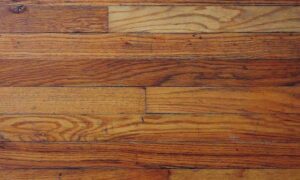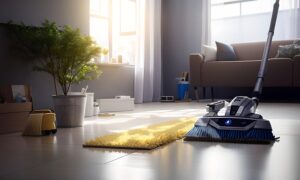When it comes to laminate flooring, one of the key considerations for enhancing both comfort and sound quality in your living space is the underlay. The best soundproof underlay for laminate floors not only improves acoustic performance but also contributes to the durability and feel of your flooring.
Why Laminate Floors Need Soundproofing Underlay and the Science of Sound Transmission
Laminate flooring, popular for its durability and aesthetic appeal, can unfortunately be a conduit for noise. This makes soundproofing underlay not just beneficial but often necessary, especially in multi-level homes or buildings.
The Need for Soundproofing Underlay
- Impact Noise: When objects or people move on laminate floors, they create impact noise or structure-borne sound. This can be particularly bothersome in multi-story buildings where footsteps or moving furniture on an upper floor can create disturbing noise in the rooms below.
- Airborne Noise: Laminate floors can also transmit airborne noise, such as voices, music, or TV sound. This type of noise can easily travel through laminate floors and become amplified due to the floor’s hard surface.
- Echo and Reverberation: Laminate floors, due to their hard and smooth surfaces, can cause echo and reverberation within a room, making the space feel less acoustically comfortable.
How Sound Travels Through Laminate Floors
- Direct Transmission: When sound waves hit the laminate floor, they can travel directly through the hard surface. Laminate, being denser than carpet or vinyl, can efficiently transmit these sound waves, which can be heard in adjacent rooms or floors.
- Flanking Transmission: Sound can also travel along indirect paths, known as flanking transmission. This occurs when sound waves travel through the walls, ceilings, and other structural elements connected to the laminate flooring, further spreading the noise.
Why Soundproof Underlay Matters
Soundproof underlay serves two primary purposes: reducing the transmission of sound through the floor and enhancing the overall feel of the flooring. This is especially important in multi-story buildings where foot traffic and general noise can be a disturbance to those below.
Types of Soundproof Underlay for Laminate Floors
- Foam Underlay: This is a common and cost-effective option. Foam underlay is light, easy to install, and provides basic sound absorption. However, it’s less effective for higher levels of noise reduction.
- Rubber Underlay: Rubber offers superior sound insulation compared to foam. It’s denser, which makes it better at absorbing sound, but it’s also heavier and typically more expensive.
- Felt Underlay: Felt underlays are made from recycled fibers and provide good sound insulation. They are also eco-friendly and add a cushioned feel to the flooring.
- Combination Underlay: Some underlays combine materials like foam and rubber or foam and felt to offer the benefits of both sound insulation and comfort.
Key Features to Look For
When selecting a soundproof underlay for laminate floors, consider:
The Role of Soundproofing Underlay
Soundproofing underlay works by absorbing and dissipating sound energy, reducing both impact and airborne noise transmission. The science behind it involves:
- Density and Thickness: Soundproof underlays are typically denser and thicker than standard underlays. The density helps in absorbing sound waves, while the thickness provides a barrier that sound waves must traverse, losing energy in the process.
- Decoupling: Some soundproofing underlays work by decoupling the floor from the subfloor. This means they create a separation that prevents sound waves from easily transferring through the building’s structure.
- Damping: Soundproof underlays often contain materials that dampen vibrations, converting sound energy into a small amount of heat, thereby reducing the sound that passes through the floor.
- Resilience: Resilient materials in the underlay can compress under impact, absorbing the energy and reducing the sound of footsteps or dropped objects.
Underlay Recommendations
Based on the information available from Buildtec Acoustics, here are some top recommendations for soundproof underlay for laminate floors:
- Sylpro Acoustic Underlay: Ideal for versatile use, this underlay offers high-density composition, mechanical resistance, and is suitable for underfloor heating systems. It’s a great choice for various spaces, including home offices and living rooms.
- Sylpro AD Acoustic Underlay: Similar to Sylpro but with the added benefit of contributing towards LEED certification, making it an eco-friendly option. It offers exceptional soundproofing performance and is compatible with underfloor heating systems.
- Basewood Acoustic Underlay for Wooden Floors: With a minimal thickness of 4.5mm, this underlay is perfect for wooden and laminate floors, ensuring no compromise in aesthetics. It’s an eco-friendly option, made from recycled materials, and offers excellent acoustic insulation.
- Sylcer for Ceramic Tiles: This underlay is designed for ceramic or stone tiled floors, offering minimal thickness and easy installation. It’s an environmentally sustainable choice and provides effective acoustic correction for existing floors.
- Sylwood Acoustic Underlay for Engineered Floors: Specifically designed for engineered floors, this underlay is versatile, eco-friendly, and provides impressive soundproofing performance. It’s compatible with all types of wooden floors and laminates.
Each of these underlays has unique properties tailored to different flooring types, ensuring effective soundproofing and enhanced living comfort.
Installation Considerations
Proper installation is crucial for the effectiveness of the underlay. Ensure that the underlay is laid flat and covers the entire floor area. Seams should be as close as possible to avoid sound leaks.
Conclusion
Choosing the right soundproof underlay for your laminate flooring is a balance between sound reduction capabilities, material preferences, and budget. Whether it’s a foam, rubber, felt, or a combination underlay, the key is to select a product that meets your specific needs and enhances the living quality of your space.
By investing in a good quality soundproof underlay, you not only improve the acoustic environment but also contribute to the longevity and comfort of your flooring.



































